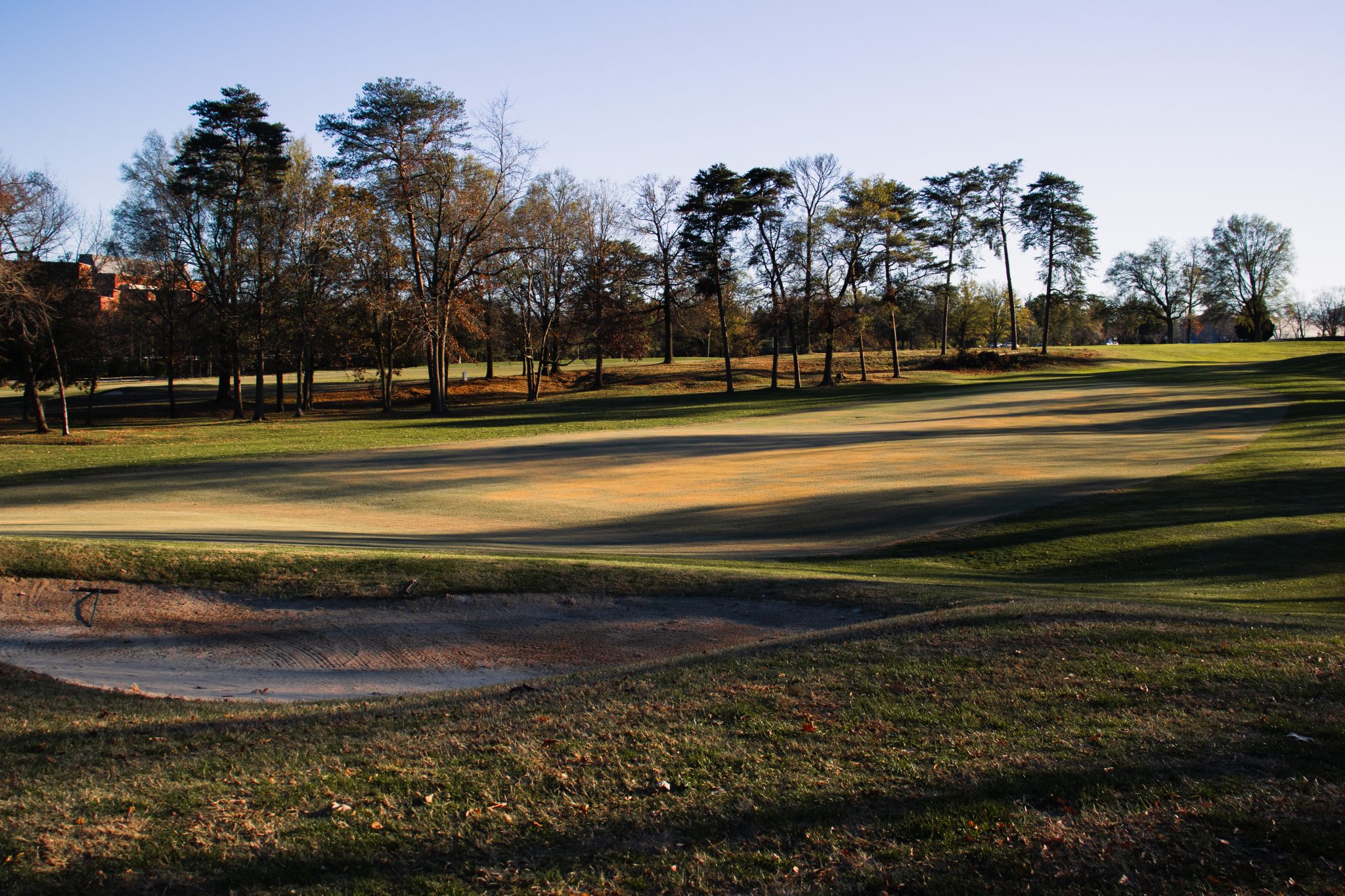Samantha Volz grew up playing golf at the University of Maryland Golf Course and later began volunteering there. Now, Volz, a recent graduate of this university, is back again — this time, for her work as a faculty research assistant.
“It’s a fun golf course to play, but there’s more to it than just a regular golf course,” she said. “They’re trying to diversify. They’re trying to make it relevant … They want to highlight more than just playing golf.”
The golf course, which stretches 150 acres and is located on Golf Course Road, started as a standard 18-hole course but has become a gathering spot where Volz and other university community members conduct academic research. It’s also known for spearheading environmentally sensitive management techniques and for its role as an amenity for its community.
Working under Dr. Karen Prestegaard, an associate professor at this university’s geology department, Volz’s research looks into carbon storage and above ground biomass. She frequents the golf course to count and measure trees and to collect data from groundwater wells and stream gauges the geology department installed.
“Everybody [who works at the course] is really friendly. They support any research going on,” Volz said.
Prestegaard has been using the golf course in her classes and for student’s research projects for many years. She sometimes takes her classes on field trips to the golf course.
[Buzzing returns to UMD after summer storm took out bee hives]
“We’re using it as an experimental watershed, and I’m using it as a basis for these various student projects,” Prestegaard said. “It’s just lovely walking around showing them things.”
The golf course was also helpful in bringing her class together when school was shut down in the beginning of the COVID-19 pandemic, Prestegaard said. Students who had only seen each other on Zoom were able to maintain social distance while studying hydrologic processes at the course.
Rumya Ravi, who served as a graduate assistant in the geology department before she graduated in August, used the wetlands at the golf course as part of her master’s thesis. In it, she observed carbon and nitrogen storage in freshwater wetlands. She also collected soil samples, observed the course’s biodiversity and recorded water levels using groundwater wells.
“I started this project during the lockdown in spring 2020 so nowhere was open,” Ravi said. “[The course] was a good place because it was easy to get to and outdoors, so it was an easy place to study carbon storage when everything else is shut down.”
Other academic departments and programs — including the FIRE program, the entomology department and the applied agriculture institute — have also used the golf course for projects and research.
Golf courses can raise environmental concerns such as water overuse and fertilizer runoff that pollute local waterways. The development of golf courses can lead to health hazards from pesticides and fertilizers and to a loss of wildlife habitats, according to Audubon International.
But Ravi said the managers of the university golf course take steps to minimize the course’s negative environmental impact, such as limiting the amount of fertilizer runoff that goes into the wetland.
[What does the campus fox say? UMD community shares interactions.]
“There’s not as much nitrogen running off [as] I thought there would be,” she said. “They try their best to be really good with managing the lands there, which is pretty awesome.”
Rob Floyd, chair of the environment and community engagement committee of the Maryland Golf Course Coalition, aims to play nine holes at the golf course every day. This volunteer organization was formed around protecting the course from potential development threats and has since evolved into a group that supports efforts to enhance the course.
The Maryland Golf Course Coalition also seeks to preserve native species and habitats on the course. For example, the course planted milkweed plants — the sole plant monarch butterfly larvae eat — in an effort to help the endangered species.
Though the golf course itself is 150 acres, the whole property is 301 acres. The remaining acres primarily consist of undisturbed forest where Floyd is interested in building trails in collaboration with the university.
The managers of the golf course also purposely chose a type of grass that requires less water and less fertilizer for parts of the golf course. Measures such as this one help with water conservation and ensure groundwater that leaves the course is clean.
Laura Russell works at the golf course’s pro shop and helps with projects around the course. She hopes to run a BioBlitz on the golf course, which will involve surveying all of the species in a designated area.
“[We would] reidentify all the species that we have here and see how they’ve changed over the years as we continue to plant new things for them and create new homes,” she said. “The university has a great opportunity to utilize the property for research and to … promote environmental sustainability practices.”



